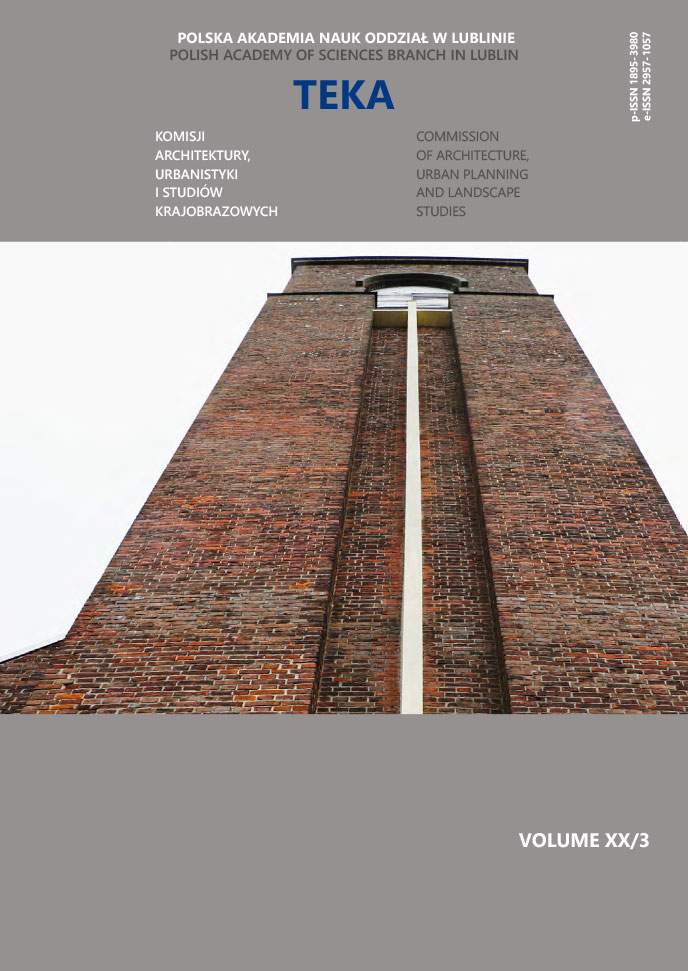Functionality of public spaces in historical urban layouts as based on Zamość and Lwów. Comparative analysis of selected components of city spaces in the context of the development and propagation/ promotion of Zamość and Lwów.
Katarzyna Kielin
k.kielin@pollub.plWydział Budownictwa i Architektury, Politechnika Lubelska (Polska)
https://orcid.org/0000-0001-5370-5686
Yaryna Protsiv
Department of Civil Engineering and Architecture, Lublin University of Technology (Ukraina)
Abstrakt
Development of cities sprouts from human potential. By limiting, restricting access to public spaces for people of every age, perceptive or motoric ability, the prospects of fruitful, inspirational encounter, forging friendship or fall in love become downrightly limited. Sameness is stagnant. Diversity brings to a city constant movement. Polish Language Dictionary defines ‘’functionality’’ (‘’funkcjonalność’’) as ‘’useful, helpful, ergonomic, efficient’’ which in relation to public space design refers to sufficient space for approach and use, convenient dimensions, operational simplicity and precise purpose of the place. Cities such as Zamość, with clearly defined, planned urban structure, pose a great challenge to designers in terms of balancing innovative, practicable architectural facilities that would not interfere with historical substance of a world heritage monument. In other words, designing in a historical centre is like walking on thin ice with the risk of distorting the integrity and original outlook of the centre.
Zamość is a unique example of a Renaissance town designed at the end of the 16th century which retained its original urban/ communication layout, fortification system and a great amount of important buildings that combine both Italian and middle – European building practices.
Słowa kluczowe:
universal design, public space, Zamość, LwówAutorzy
Katarzyna Kielink.kielin@pollub.pl
Wydział Budownictwa i Architektury, Politechnika Lubelska Polska
https://orcid.org/0000-0001-5370-5686
Autorzy
Yaryna ProtsivDepartment of Civil Engineering and Architecture, Lublin University of Technology Ukraina
Statystyki
Abstract views: 178PDF downloads: 169




